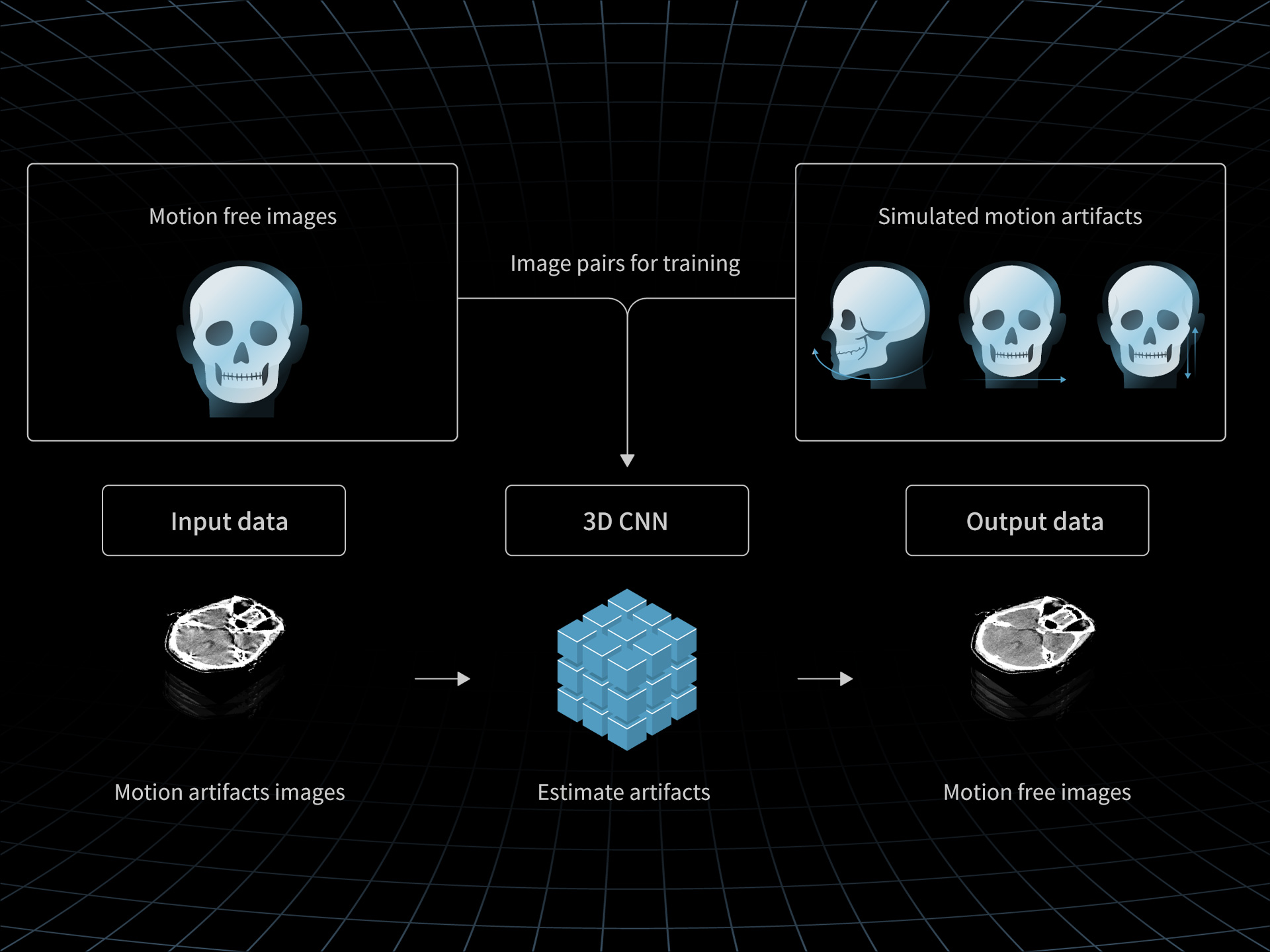3D modeling of the motion pattern to restore the real clinical situation

Computed Tomography has become an essential first-line imaging tool for diagnosing a wide range of brain conditions, including stroke, trauma, and tumors. In particular, CT plays a critical role in the rapid assessment of acute ischemic stroke, where timely and accurate imaging is vital for treatment decisions. However, patient head motion—a common challenge in emergency settings and reported in nearly 25% of acute stroke cases—can significantly degrade image quality [1,2]. This often necessitates repeat scans, which prolong examination time and increase radiation exposure to patients. Motion Freeze, a deep learning–based algorithm, effectively reduces motion artifacts, improving neuro-imaging outcomes.
Motion Freeze is the first deep learning algorithm on the market* specifically developed to correct head motion artifacts. Its neural network architecture was designed from the ground up for this task and trained on a large dataset generated from diverse, clinically realistic motion scenarios. By significantly reducing artifacts and improving the visibility of brain structures and lesions, Motion Freeze helps minimize the need for repeat scans—streamlining workflow and reducing radiation exposure for patients.
*FDA cleared, MDR marked


Learn more about Motion Freeze: Motion Freeze Technical White Paper